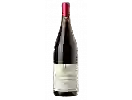
Château Gaudrelle (Alexandre Monmousseau)Ammonite Rosé Brut
This wine is composed of 100% of the grape variety Cabernet Franc.
This wine generally goes well with beef, lamb or mature and hard cheese.
Food and wine pairings with Ammonite Rosé Brut
Pairings that work perfectly with Ammonite Rosé Brut
Original food and wine pairings with Ammonite Rosé Brut
The Ammonite Rosé Brut of Château Gaudrelle (Alexandre Monmousseau) matches generally quite well with dishes of beef, lamb or spicy food such as recipes of fricandeaux german style, lamb chops with spanish sauce or pasta with chicken and curry.
Details and technical informations about Château Gaudrelle (Alexandre Monmousseau)'s Ammonite Rosé Brut.
Discover the grape variety: Mourvèdre
Mourvèdre noir is a grape variety originating from Spain. It produces a variety of grape specially used for wine making. It is rare to find this grape to eat on our tables. This variety of grape is characterized by medium to large bunches, and grapes of medium size. Mourvèdre noir can be found in several vineyards: South-West, Cognac, Bordeaux, Provence & Corsica, Rhône valley, Languedoc & Roussillon, Loire valley, Savoie & Bugey, Beaujolais.
Informations about the Château Gaudrelle (Alexandre Monmousseau)
The Château Gaudrelle (Alexandre Monmousseau) is one of of the world's great estates. It offers 25 wines for sale in the of Loire Valley to come and discover on site or to buy online.
The wine region of Loire Valley
The Loire Valley is a key wine region in western France. It follows the course of the Loire River on its Long journey through the heart of France, from the inland hills of the Auvergne to the plains of the French Atlantic coast near Nantes (Muscadet country). Important in terms of quantity and quality, the region produces large quantities (about 4 million h/l each year) of everyday wines, as well as some of France's greatest wines. Diversity is another of the region's major assets; the styles of wine produced here range from the light, tangy Muscadet to the Sweet, honeyed Bonnezeaux, the Sparkling whites of Vouvray and the juicy, Tannic reds of Chinon and Saumur.
The word of the wine: Friendly
Said of a wine whose aspects are pleasant and not too marked.














